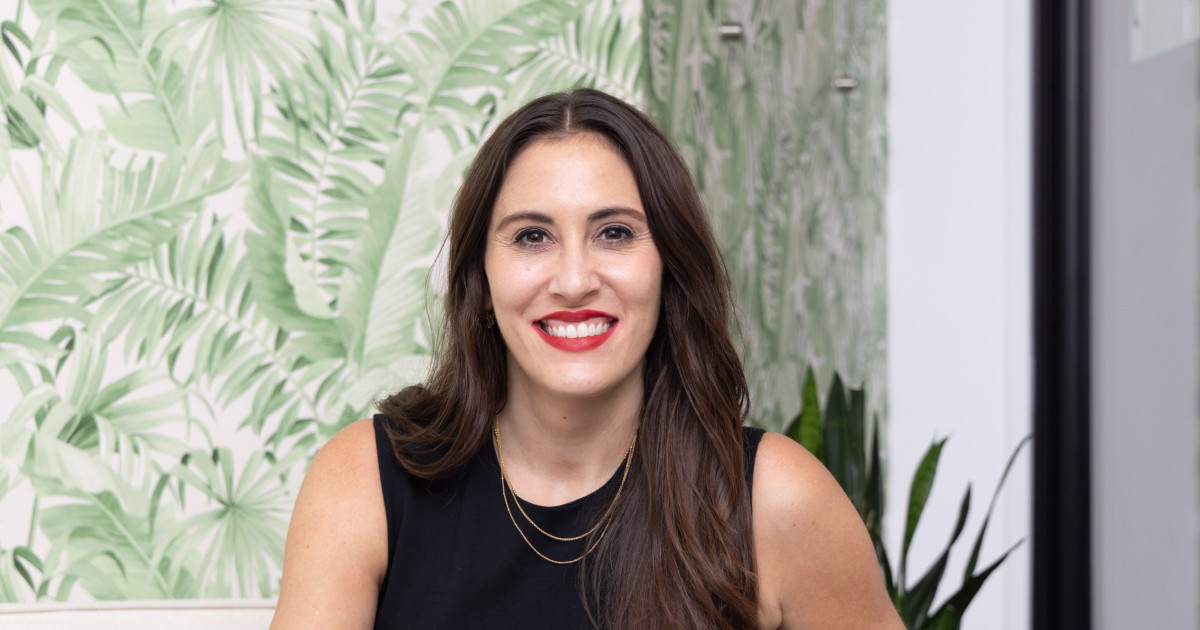Copyright Parade

When you imagine breast cancer risk, you might think about the BRCA gene (and perhaps Jane’s storyline on The Bold Type). You might remember your doctor or mom asking you if you’ve gotten your mammogram yet, or your friends sharing their stories of checking their breasts for lumps. In other words, there are ways to detect cancer and see it coming, right? Unfortunately, that’s not the case for everyone and in every situation. Jenny Maenpaa, a therapist, was diagnosed at the young age of 39—after having zero symptoms. Ahead, she bravely shares her story and what she wishes she had known earlier. 🩺SIGN UP for Parade’s health newsletter with expert-approved tips, healthy eats, exercises, news & more to help you stay healthy & feel your best self💊 Getting a Breast Cancer Diagnosis With No Symptoms As stated above, Maenpaa’s breast cancer journey started with no symptoms—and she finds that to be “the scariest thing.” Her diagnosis was a happenstance that occurred when she hit her deductible and decided to get all the free healthcare she could. Related: Wanda Sykes Has Stage 0 Breast Cancer—Here’s What That Means That included a mammogram. Maenpaa figured it would help provide a baseline for the future and be a smart idea since the rates of breast cancer diagnoses are rising in young women. However, the process was surprisingly complicated. “Being 39, I initially received resistance to my request, so I argued that being Ashkenazi Jewish, having dense breasts, never having given birth and having a maternal relative who’d had breast cancer increased my risk factors,” she recalls. “While all of those things are true, none of them were particularly concerning for me, since my nana had breast cancer in her 60s and lived well into her 90s, and I knew I had tested negative for the BRCA gene.” Maenpaa finally received approval and scheduled the first appointment available (which was almost half a year out). In the months leading up, she had an annual primary care visit and a gynecology visit, both of which entailed manual breast exams, and neither of which resulted in any concerns. However, after the mammogram, her doctors felt that they needed to investigate further with an MRI and biopsy, unsure of what they were seeing. “At this point, I was still not concerned, thinking they were just being thorough,” Maenpaa tells Parade. Then, on New Year’s Eve, she received the call. Maenpaa had cancer. “I was completely numb for the next 36 hours, going through the motions in a daze,” she remembers. Navigating a Breast Cancer Diagnosis as a Young Woman The median age for breast cancer in women is 62 years old—much older than Maenpaa was—so relevant information was somewhat scarce. “I am so grateful that my oncologist is the head of the Young Women with Breast Cancer program at Memorial Sloan Kettering, which provides tailored care to women diagnosed under 45,” Maenpaa says. “The conversations we had included information about egg freezing before I started my treatment, preserving my fertility with specific medications during treatment and scalp cooling to prevent hair loss from chemo.” Without a partner or children, she also had to consider who would carry out her normal daily tasks, such as cleaning the apartment, changing the cat litter, bringing boxes up from the mailroom and taking care of her physical needs. What Helped Maenpaa Cope With Her Diagnosis No one is fully prepared to handle the emotional turmoil of a cancer diagnosis—even a therapist. Maenpaa is thankful to have good friends who accompanied her to appointments, even though that meant they had to arrange childcare, change travel plans and adjust work obligations. They gave her flowers, cooked her dinner and provided her with company, too. Outsourcing was a major help for her, whether for home cleaning or accepting DoorDash gift cards from friends. She’s also appreciative of Pilates, a practice she already loved that worked her muscles in a slow, low-impact way. “Pilates allowed me to have gratitude for my strength and allowed me to tolerate the most difficult side effects from treatment a lot better than I would have without it,” she says. Related: At a Loss for Words? Here Are 100 Thoughtful Messages To Write in a Get-Well Card for Cancer Patients What Treatment Has Looked Like for Maenpaa Her treatment timeline included five months of weekly chemo, from February to June 2025. She also had to undergo two surgeries (lumpectomy and reconstructive) in July and August, which preceded four weeks of daily radiation in September and October. Additionally, Maenpaa began monoclonal antibody infusions every three weeks starting in April, and that will go through April 2026. As if that wasn’t enough, she began getting hormone suppressant injections in February, and that happens every four weeks. Last but not least, she started taking aromatase inhibitors daily after surgery, which are taken for a minimum of five years but may be closer to 10. “With hormone-positive breast cancer, there isn’t really a finish line,” Maenpaa says. “Because we can’t live without estrogen, I can’t eliminate the thing that gave me cancer from my body or my life.” Now 40, she considers herself to be in the “phase of survivorship,” which means daily pills, injections every few weeks, and regular scans for years. Those scans even include ones as seemingly random as an echocardiogram, since chemo can negatively affect heart functioning. She also has to continue to assess her bone density since treatment lowers estrogen levels, therefore increasing the risk of osteoporosis and fractures. In addition to the life-saving medical treatments she undergoes, Maenpaa also had to manage side effects. “Sometimes that meant adding more medication, sometimes adding in complementary services like physical therapy or acupuncture and sometimes it was adding in naturopathic remedies that the integrative medicine department at my hospital approved and had no interactions with my medications,” she says. What Maenpaa Wishes She Had Known Earlier When it comes to what Maenpaa wishes she’d known, she thinks of the arguments she made to the doctors—ones she didn’t believe were “that big of a deal.” “I wish I had known what risk factors I should be considering,” Maenpaa says. “I had no idea that being Ashkenazi Jewish, having dense breasts, never having given birth and having a maternal grandmother who’d had breast cancer increased my risk factor…I thought that as long as I didn’t have the BRCA genetic mutation and no palpable masses, I was all good.” In reality, she says, dozens of genetic mutations can increase breast cancer risk—not just the BRCA gene. But again, she didn’t learn this until she received a diagnosis. Related: The #1 Early Breast Cancer Sign Most People Miss She also didn’t know (like many of us, I’d guess) that mammograms aren’t as effective at detecting masses in dense breasts as ultrasounds or MRIs. “The density can mask tumors due to appearing the same on imaging,” she explains. Looking Ahead: What Maenpaa Wants Other People To Know Cancer is a terrible disease, *and* you can still live a joyful life After scouring the internet, Maenpaa couldn’t find any stories about young women thriving or living full lives during or after breast cancer treatment. All the articles and accounts she remembers seeing focused on sadness, fear and death. Not wanting to accept that, she started her own social media channels to spread a new message. “While getting treated for cancer isn’t exactly enjoyable, it also doesn’t have to be an absolute nightmare,” she says. “I wanted to show the real parts of treatment—which includes exhaustion, unbearable side effects and physical trauma—but also the days when I felt totally normal and went to happy hour or a Broadway show or even a black tie event.” In short, Maenpaa wants people to know that a cancer diagnosis doesn’t mean life has to stop, just that it will look different. Advocate for yourself in healthcare spaces The other key message she wants to share is that you don’t have to accept a denial from a healthcare provider or insurance company. Along those lines, checking for breast cancer is more vital than you may have been led to believe. “Women under 40 are generally not told to begin screening unless they have a mutation, a genetic reason or have physical symptoms, like a palpable mass or other breast changes,” Maenpaa says. “While breast cancer in younger women is rarer than in women over 50, it is the most common cancer among women ages 15 to 39, and certain kinds of breast cancer are on the rise in young women.” It’s perhaps an understatement to say that Maenpaa is glad she didn’t listen to that medical advice. “If I had waited a full year until I turned 40, or god forbid 45, as recommended, my prognosis would have looked very different,” she continues. “Catching this cancer early is the only reason I am looking at a 99 percent survivability rate.” Up Next: Sources:



